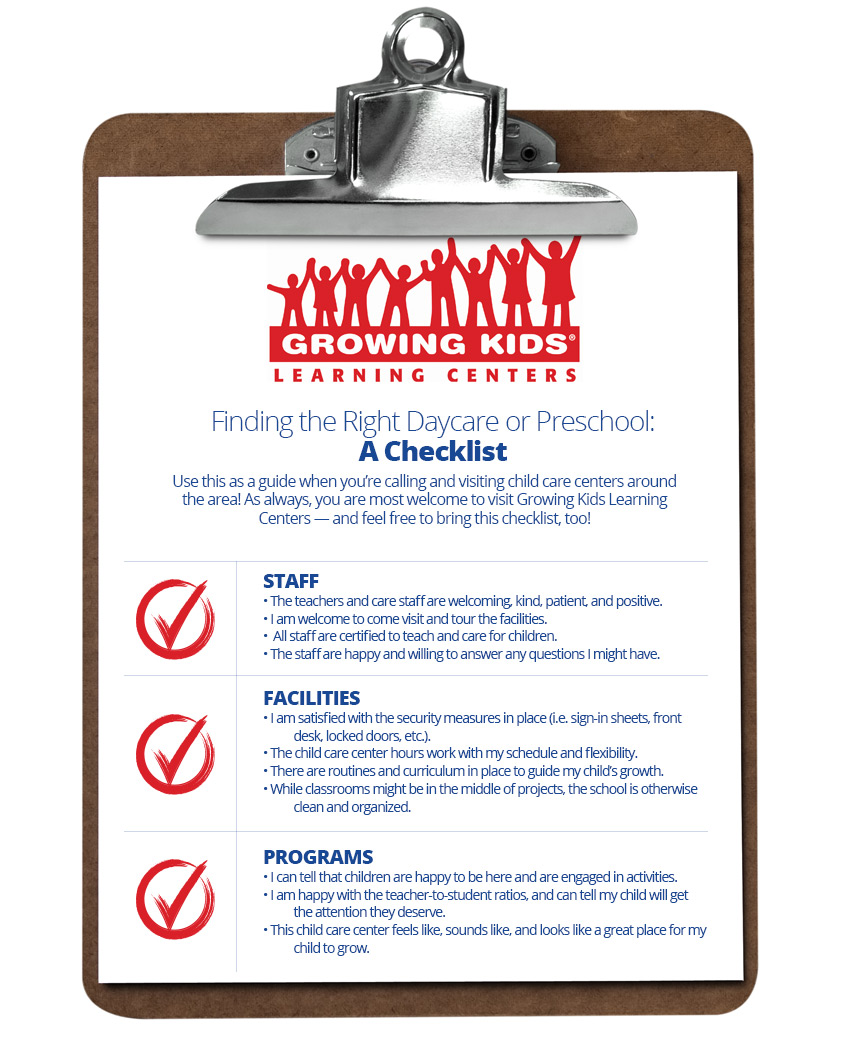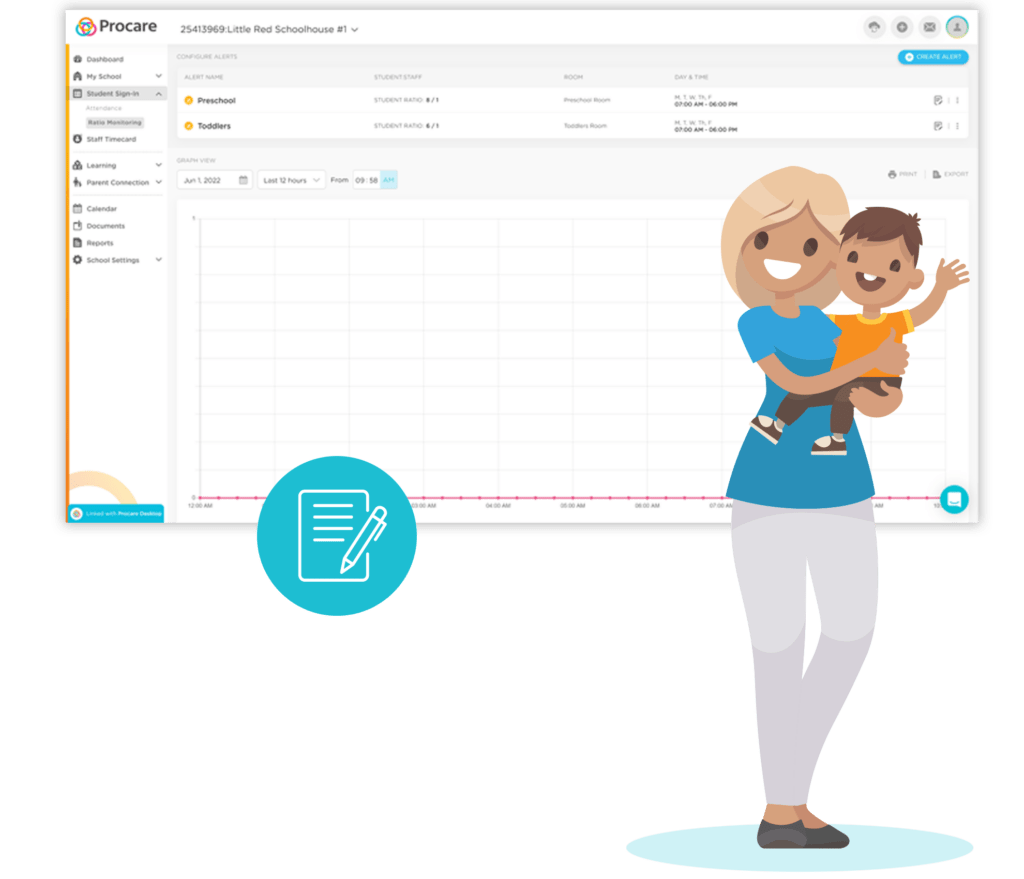Daycare Ratios By State - Tumwater, Washington, a small suburb of Olympia in the shadow of Mount Rainier, is home to Janna and Andrew Ryan and their 3-year-old son, Elliott. Janna and Andrew both commute to Olympia every day for their jobs with the state government. For years, they have struggled to find quality childcare for their youngest son.1
Although the state of Washington passed a paid leave law in 2017, 2 Elliott was born in 2016, therefore, Janna and Andrew took a lot of unpaid leave to care for him in the last few months first of his life. With new expenses for things like diapers and baby clothes, the Ryans' parents were in financial trouble as their debts increased and their income decreased. Knowing that childcare options for infants are limited, Janna and Andrew were on the waiting list well before Elliott was born and were able to find a place for him when he was 6 months old at a childcare center in al their community. However, they quickly discovered that childcare was their biggest monthly expense - more than their monthly rent. Although they both work full-time jobs that put their family income above the state average, the Ryans struggle to manage their family budget. They have no money at the end of the month to keep at home.
Daycare Ratios By State

Although daycare is the Ryans' largest monthly expense, they have recently become concerned about the program's quality. While the facility is clean and new, policies regarding parental communication and safety procedures are absent or not consistently followed, leaving the Ryans concerned about their child's future safety. Janna used the time to explore other opportunities and had to take time off from work to tour. Limited access to childcare has forced Janna and Andrew to make decisions about what trade-offs they should make. They need good education, skilled workers, and suitable places to live and work, but they also have limited resources. In September 2017, Elliott returned to the program that Janna and Andrew loved. The program has been in operation for 30 years, has qualified teachers, and focuses on teaching comprehension and acceptance. Unfortunately, Ryans recently found out that it is closing because the office owner did not renew the contract, and the operating costs were too high. As a result, Janna and Andrew are now back to finding affordable childcare. Currently, they are releasing their plans for a second child. They really wanted Elliott to have a brother, but the cost of caring for two children was a big problem.
New Iowa Child Care Law Allows More Kids Per Class, Younger Workers
This is the reality of early childhood education in America today. For single-income or minimum-income families, the struggle is even more intense. Families across the country are struggling to afford child care, and what they pay for school fees is not necessarily good childcare or good teacher salaries. As Janna says, this "feels like a big scale that doesn't add up." 3
The high cost of child care, coupled with a shortage of teachers and care, is confusing parents and policy makers. To understand the impact of what parents are paid and what teachers receive, it is important to understand the costs of early childhood programs and what drives the costs up.
Using data from the Center for American Development' "Where Has Your Child Care Money Gone?" new tools and research that evaluates the cost of family home care, this report looks at the "big bill" especially as it relates to the care of infants and children. The report provides an estimate of the cost of the state to provide child care that meets the minimum requirements of the state license, and the cost to pay for health care. The data shows that care for infants and toddlers is more expensive than for preschoolers. In addition, by analyzing the estimated costs of the median family income, it is clear that the cost of caring for infants and young children exceeds what families share. Similarly, a review of public subsidies to help families find child care found that these child care subsidies reach only a small percentage of eligible families and are insufficient to cover the actual costs of infant and child care.
To address these findings, legislators can take immediate measures, such as the full cost of education and reform child care policies, but they also need to look at long-term solutions such as paying for infants and toddlers and providing comprehensive child care.
Washoe County Child Care Regulation Changes: Home Child Care Ratios And Safe Sleep
This report begins with a description of the cost structure developed by CAP and presents data from the average cost to provide infant and child care that meets licensing standards, as well as child care that meets best practice standards. After this, the report analyzes the current revenue available to service providers. Using state median income data, the report estimates how much median income households would spend if market prices reflected the actual cost of providing infant and toddler care licenses; and reviews the adequacy of current child care subsidies. Finally, the report makes six recommendations to address potential issues in the care of infants and children.
Children start learning from birth. Every interaction a child has with a caregiver adds to the experiences, which affect the rapid brain development that occurs in the first few years of life and lead to success throughout life. . . . Therefore, families' ability to access programs run by professionals and qualified staff can have a significant impact on children's educational attainment.
Unfortunately, nearly 1 in 5 babies and toddlers in the United States lives in poverty, putting millions of children at risk of heartworm disease before they even grow up. Travel. 6 Stress associated with poverty can limit children's ability to stay healthy and healthy. and the brain. carry on. Children of color fare better, with nearly 1 in 3 African American and Hispanic children living in poverty.7 It is not surprising that the gap in children's education skills from income is evident. at the age of 9 months and expands during the childbearing years. 2.8 years. Ensuring that all families have access to affordable, quality child care can help reduce some of the effects of poverty and prepare children for school and beyond.9

The benefits of licensed child care also extend to parents and the wider community. Access to affordable, quality childcare can help parents get jobs, work longer hours, or go to school10 and can have a long-term impact on family well-being. they can farm, and mothers are more likely to work.12 Economists estimate that if child care costs were 10 percent of family income, the United States would see all goods Total GDP of $ 210.2 billion is the same. 70 billion dollars a year. increase in government revenue-both due to increase in revenue.13
Bolster Support For Child Care To Stabilize Ohio
In addition to the immediate effects of affordable, quality child care, researchers have found that access to this care leads to positive social outcomes for years to come. Participants are more likely to have better health outcomes, increased future income, and reduced crime rates, meaning every dollar spent on smaller programs is paid back to children many times over.
It's no secret that childcare can be expensive, and this is especially true for baby and toddler care. A year of childcare often exceeds the cost of college tuition each year and is one of the biggest expenses in a family's budget. what parents can do. the local market can cope. For example, in addition to tuition, day care centers may rely on donations, reduced rent, or fundraising to cover their costs.16
With approximately 250,000 licensed child care providers in the United States, operating costs vary widely, making estimating child care costs an inexact science.17 However, modeling approaches can help understand the economics of care. and children and business. the impact of public policy on the child care industry and the opportunities for families. In developing the model, it is necessary to make several assumptions about the hypothetical program. These can be shown from the data
Daycare ratios texas, georgia daycare ratios, nj daycare ratios, daycare ratios, california daycare ratios, virginia daycare ratios, maryland daycare ratios, michigan daycare ratios, daycare ratios ohio, state daycare ratios, florida daycare ratios, in home daycare ratios
0 Comments